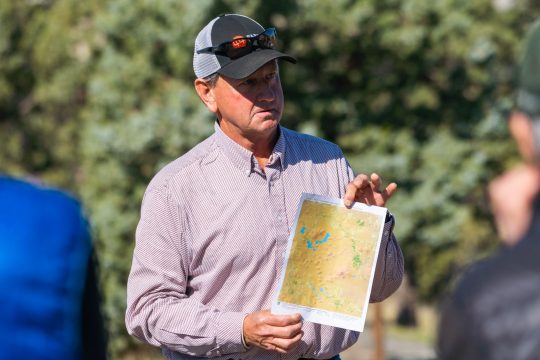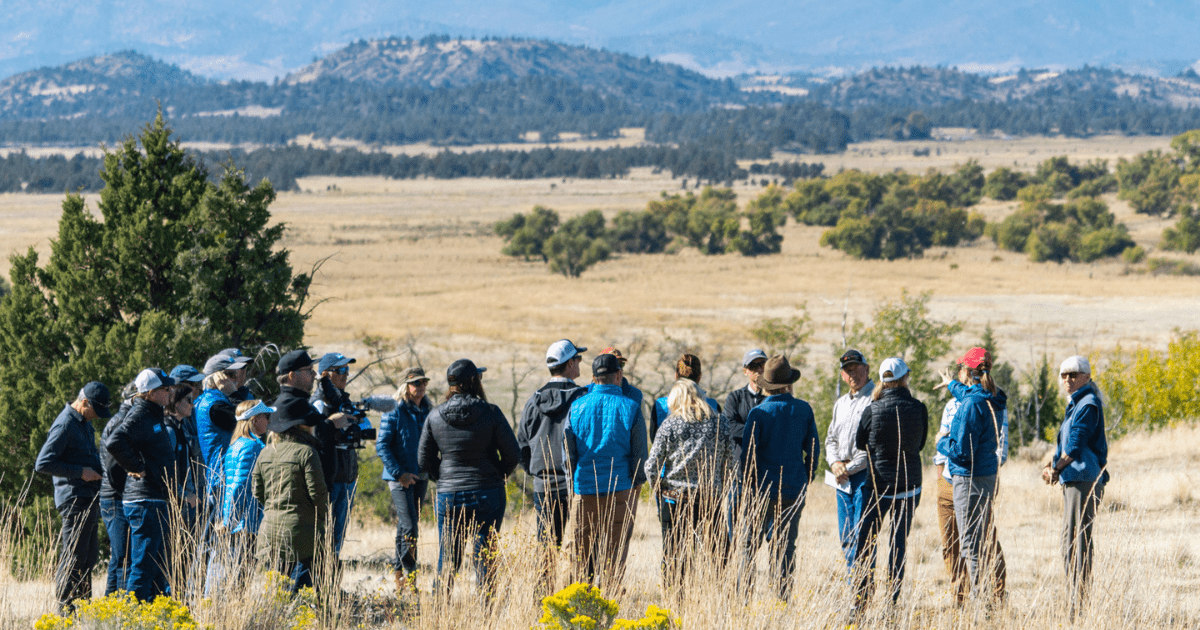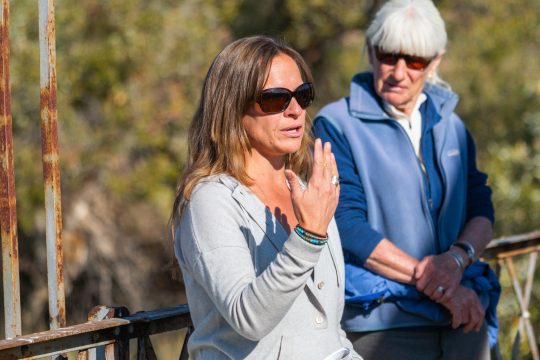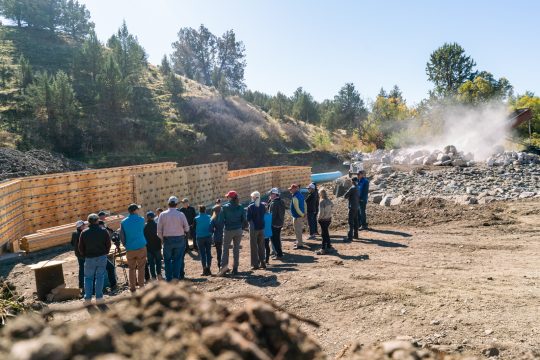Board Tours Shasta Region
This past weekend CalTrout’s Board Governors, key decision-makers that steward our mission forward, met in Shasta for our quarterly meeting and to tour two of our Mt. Shasta/Klamath Region’s projects.
First stop was to the Cardoza Ranch in the Shasta Valley where we’re helping the fifth-generation ranching family increase irrigation efficiencies across their property while at the same time removing a fish barrier that the will result in 14 miles of unimpeded fish passage and access to important Chinook and coho salmon rearing and spawning habitat.
It was then on to the Hart Ranch where on-the-ground work will result in 1.5 cfs of cold water dedicated instream to the Little Shasta River using California water code section 1707. This water will enhance year-round flows and specifically target the outmigration of juvenile coho salmon from April 1 through June 30. The project entails the construction of a new stock watering facility, replacement of the ranch’s main pipeline, and moving and modifying the diversion structure. It will also eliminate a temporal barrier to up to seven kilometers for juvenile and adult coho salmon habitat in the Little Shasta River.

Ranch owner, Blair Hart, explains the challenges landowners face in complying with Endangered Species Act stipulations.
We ended our tour with lunch at Iron Gate Dam where we were joined by Mark Bransom, CEO of the Klamath River Renewal Corporation. Mark provided an update on the four PacifiCorp dams that are on track for a 2022 removal date. He spoke of the cooperative effort to re-establish the natural vitality of the Klamath River and support communities in the basin by improving the economy, benefiting electric customers, and enhancing river health.
Board members unanimously agreed that there is nothing like seeing the projects first-hand. Board member Loretta Keller had this to share, “Hearing the positive impact CalTrout’s work is having on the lives of the landowners after years of building trust… and the complex and, at times, contentious water issues ranchers face and CalTrout navigates gives me a much greater appreciation of the work CalTrout does. I was just blown away.”







